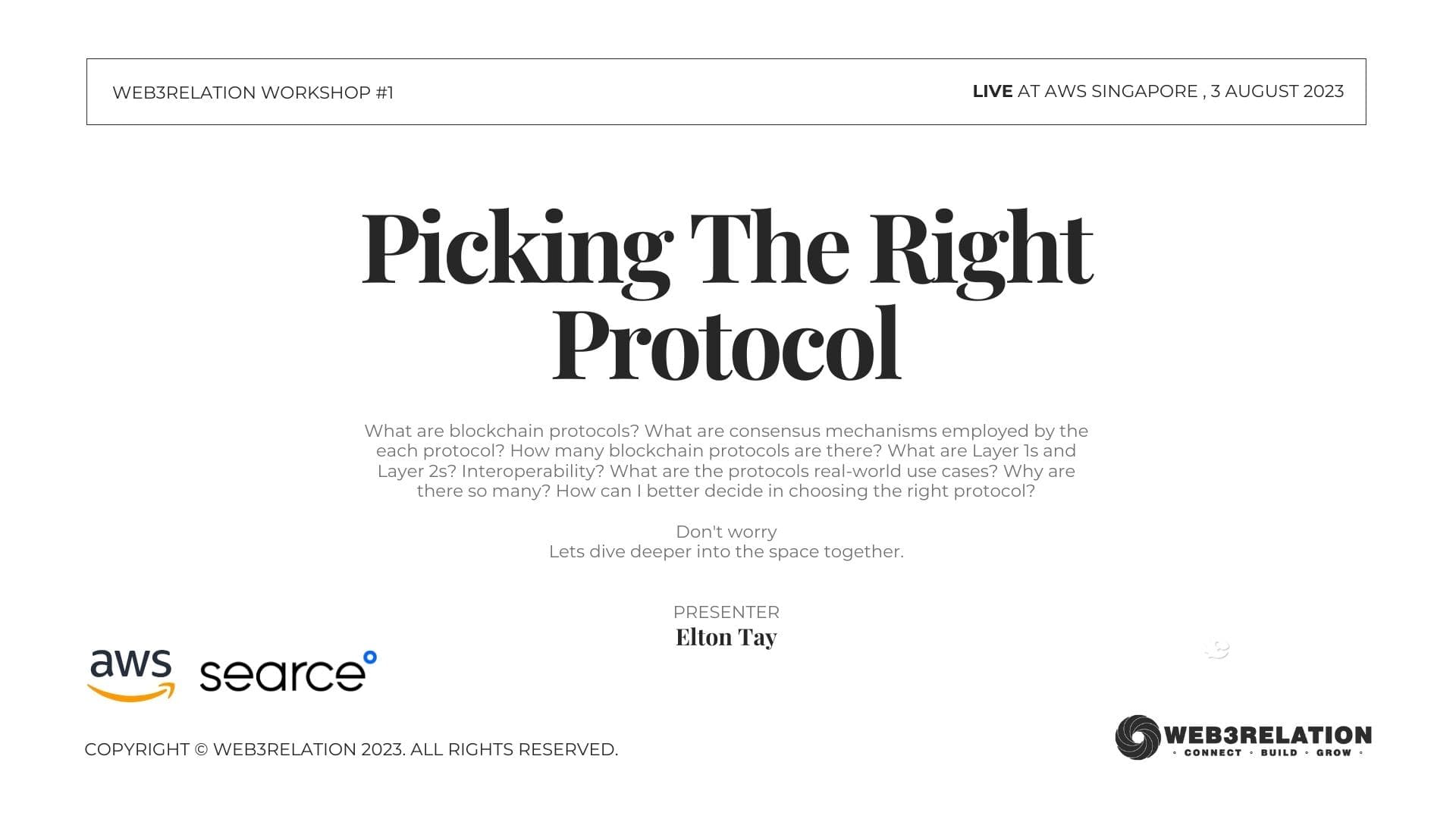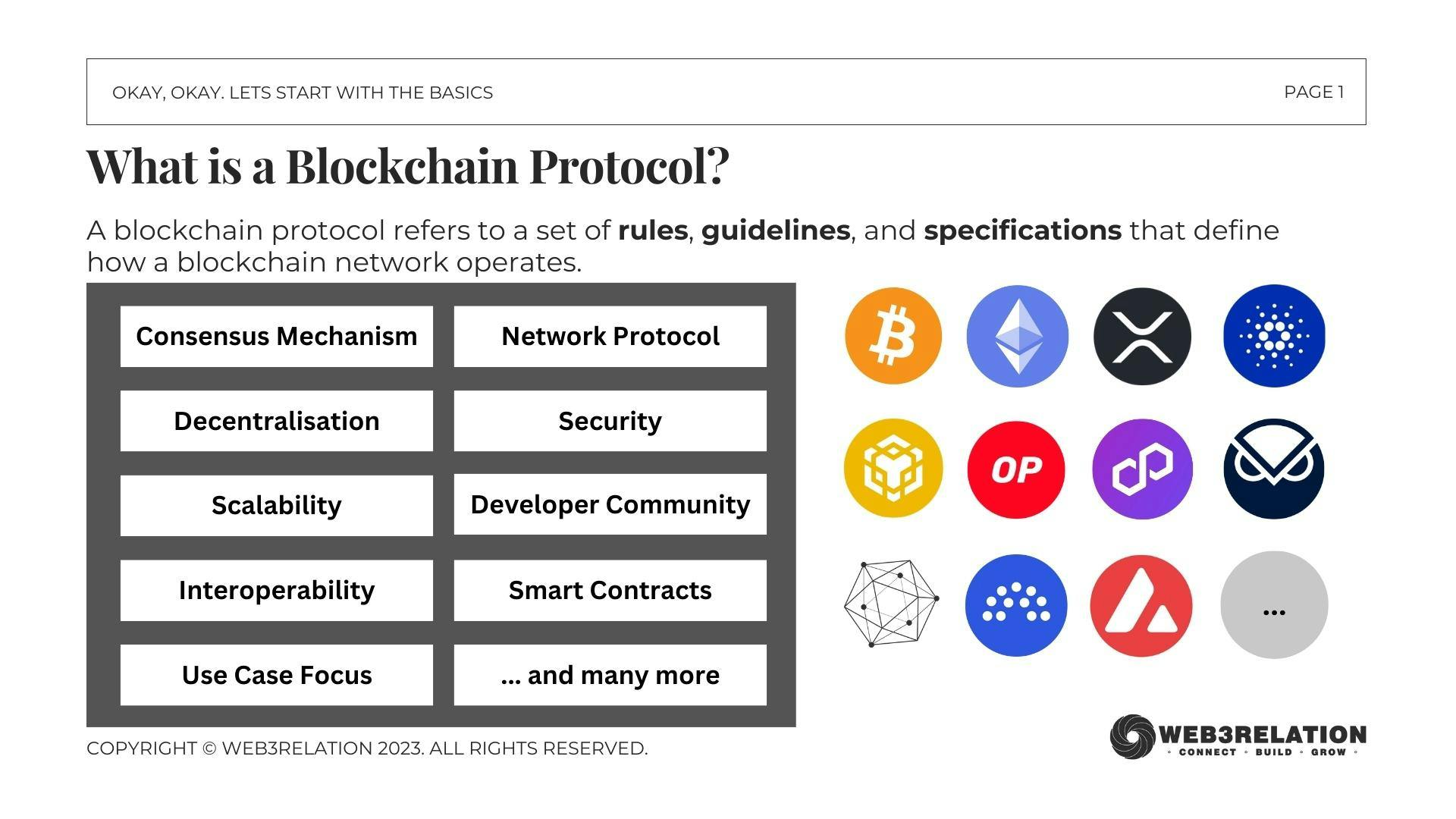Picking The Right Protocol : What To Expect For 2023
by Elton Tay, Founder of Web3Relation

Navigating through the blockchain protocols
As the blockchain industry continues to grow exponentially, so does the number of protocols. Now, choosing the most suitable protocol for your project becomes an increasingly critical decision. Even in 2023, countless layer 1s, layer 2s and even layer 0s appear on the horizon, each offering unique features, consensus mechanisms, and scalability protocols.
In this article, you will be better informed on the current 2023 landscape. So, let's embark on this journey to navigate the blockchain terrain and find the perfect protocol fit for your needs!

Blockchain protocol? Layer 1? Layer 2?
A blockchain protocol defines the rules for verifying and adding transactions to the ledger. It is broadly categorized into Layer 1 (L1) and Layer 2 (L2) protocols. L2 protocols aim to address scalability challenges that L1 faces, enabling faster and more cost-effective transactions while maintaining decentralization and security.
The top L1 blockchain protocols include Ethereum, Binance Smart Chain and Cardano, with Etheruem leading with a total market cap of $219 billion, which is 3 times of the combined market cap of the remaining L1s.
For L2s, the more popular protocols include Polygon Miden and Linea which are Zero-Knowledge L2 rollups, as well as Arbitrum and Optimism which are Optimistic L2 Rollups on Ethereum.
How do I decide on the protocol?
Before choosing a blockchain protocol, there have several essential factors to consider. Among the top considerations are the use case, interoperability, and the strength of the developer community.
When considering use cases, different blockchain protocols offer distinct trade-offs. If prioritizing security over scalability and willing to accept slightly longer transaction times, L1 protocols are suitable. For enterprises seeking data privacy and centralization, private and permissioned blockchains like Hyperledger and Quorum are preferred. For products requiring numerous on-chain transactions, L2 protocols provide cost efficiency and higher throughput. The possibilities for use cases are endless.
Interoperability is also vital in this vast landscape of protocols and products. It enables seamless communication and collaboration between different blockchains, enhancing innovation and cross-chain asset transfers. Interoperability addresses scalability challenges, promotes global adoption, and avoids vendor lock-in, empowering developers to build interconnected decentralized applications. Embracing interoperability ensures a cohesive and efficient blockchain landscape, unlocking the technology's full potential and driving widespread adoption.
Developer community is also a critical factor. A vibrant and active developer community signifies strong support, continuous improvement, and ongoing development. A robust community also fosters collaboration, innovation, and provides resources for developers, making it easier to build, deploy, and maintain blockchain applications. Engaging with an active developer community ensures access to a wealth of knowledge, best practices, and timely updates, contributing to the success and sustainability of blockchain projects.
Conclusion
As the blockchain industry expands with countless protocols in 2023, choosing the right one becomes crucial. Factors such as use case, interoperability, and the developer community are just the tip of the iceberg. At Web3Relation, we offer consultation support to guide you in selecting the perfect protocol for your project. Reach out to us today!